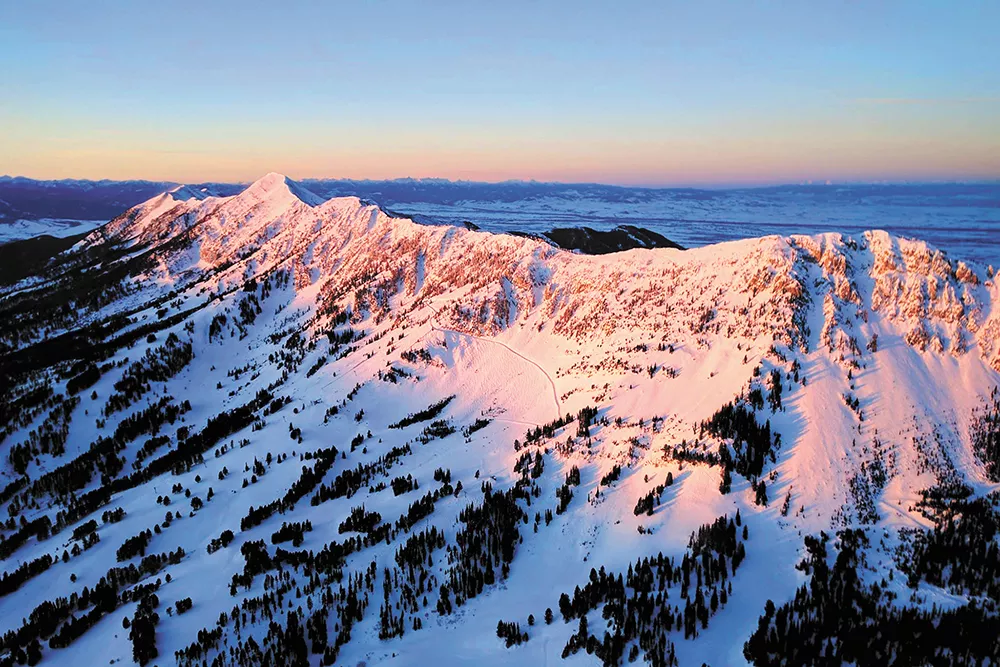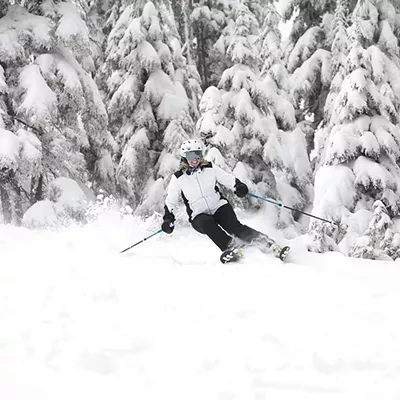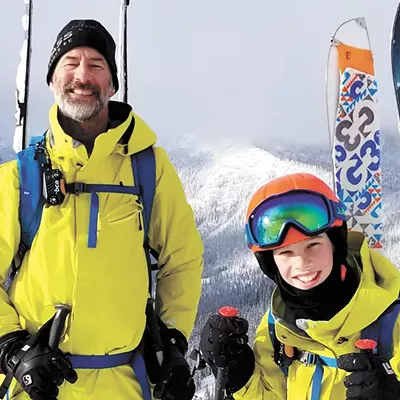Mike's text read like the excited shouting of a fly-fishing newbie hooking into his first trout. The skies were finally opening above the Northern Rockies in time for my trip to Bozeman, with the forecast calling for snowfall edging into the double digits. Mike had already been champing at the bit to introduce me to Bridger Bowl, his new hometown mountain. Now our first outing of the season together looked primed for "epic powder day" status.
Then he asked a question that sent my heart hurtling into my throat: "Should we skin the ridge?"
Bridger's ridge terrain is the stuff of wild chairlift fables in Montana, infamous and unforgettable. It's expert-only fare, a towering wall of steep chutes and cliffs, and riders venturing into the area are required to wear avalanche beacons. That double-digit day suddenly sounded a whole lot scarier. I told Mike that we could check the avalanche report the morning we went, an unspoken "maybe" I knew he'd read with a mix of frustration and disappointment.
As many lessons as I've taken, and as many backcountry turns as I've made, some butterflies never really go away. You learn to choke them down, to remind yourself of your skill, to let the promise of powder cascading over your face overpower the tickling of their wings in your stomach. But the fear is still there, as sure as it was the first time you stood on rickety legs in a lift line not knowing what awaited you at the top.
Throughout my childhood, one run in particular embodied that fear. My dad would talk about it in a tone otherwise reserved for ghost stories, pointing from the lift at Red Lodge Mountain to the run's one visible patch. The sign alone, perched on a tree near the summit, was enough to spark both curiosity and terror. And it was taken for granted that someday, I'd have to prove my salt on Drainage.
When that day finally came, I skied past the sign, trembling as the earth began to melt away in a steep sea of trees and Volkswagen-sized moguls. The hot-dogging parallel turns I'd perfected were cast aside as I traversed from one side of the slope to the other, guts rising and sinking as I operated in pure survival mode. With every traverse, the run narrowed, until I was making slow stem christies down a narrow gully. I finally emerged at the base of an old double chair and collapsed, exhausted, next to my dad. I'd skied Drainage and lived, my family's metric for expert skier ranking. Dad smiled.
The fear subsided for a while after that. But like a bad penny, it still turns up. It turned up at the top of a narrow chute in the French Alps, below a cornice on the Beartooth Pass, halfway down an icy headwall with a loaded toboggan behind me. Each time the butterflies have hammered my ribcage with their wings, and each time I've swallowed hard in a fruitless bid to calm them.
We're told repeatedly in our lives to conquer fear. We watch the pros shredding the world's toughest peaks and convince ourselves it's possible to banish that nervous fluttering entirely. In truth, though, there's no silencing the alarm bells that sound as we approach our limits, only a learned ability to cope with the wail. We hone our skills, we share our stories and we surround ourselves with supportive people so that when we finally do skin up that ridge, the fear we feel doesn't take control. ♦















